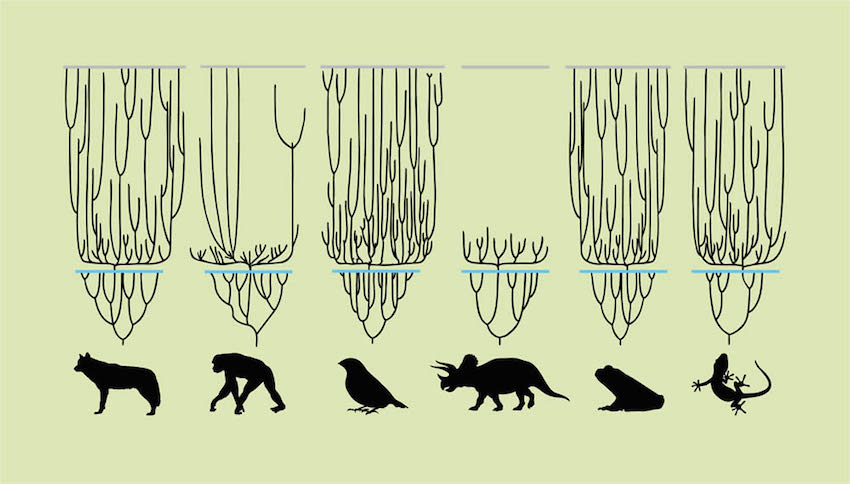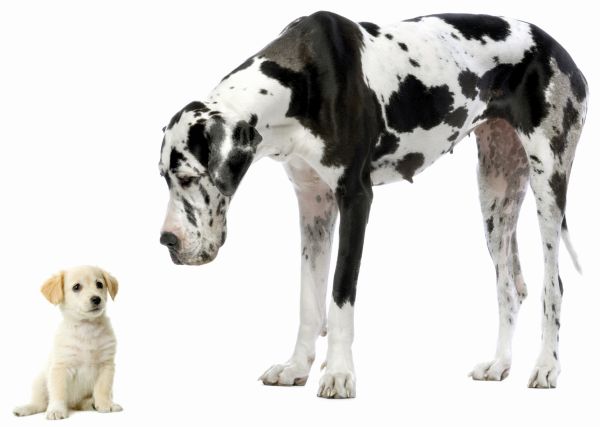Tree of Life? Or an Orchard?

Introduction
The theory of Evolution tells us that all of life on earth is descended from a single common ancestor. We see this symbolized by the tree of life. Further, natural selection, acting on random mutations, is the driver of this evolution from simple to complex.
But as we saw in our last post, we now know that this isn’t possible.
Long term evolution would require the gain of huge amounts of new genetic code, or information, over time. But neither natural selection nor mutations add any new information. Natural selection removes information and mutations corrupt it.
As Christians, we believe the tree of life model is wrong. We think it’s an orchard, because this is what we see in the Bible’s creation account in Genesis. Also, the orchard is in harmony with natural selection and mutations, because no new information is required.
Each According to its Kind
In Genesis chapter one we see the phrase “each according to its kind” used ten times, as God creates all of the world’s plant and animal life (Genesis 1:11-12, 20-21, 24-25).
A plain reading of the text in Genesis infers that plants and animals were created to reproduce within the boundaries of their kind, not evolve from one to another.
We believe that God created these original plant and animal kinds each with a vast amount of genetic information. This would give their descendants the potential for the variation they needed as they spread out and adapted to different environmental conditions according to natural selection.
You might be familiar with the classification scheme of: kingdom, phylum, class, order, family, genus, and species. Most of the created kinds are at the family level, with some exceptions that are somewhat higher or lower.[1]
Animals would be of the same kind if they have the ability to interbreed with each other. For example, all of the varieties of cattle are part of same kind, as are all of the varieties of chickens, and dogs, and so forth.
Horses, donkeys, and zebras can interbreed. So they probably all belong to the same original created horse kind.
Tigers and lions are able to breed with each other. The cougar can breed with the ocelot and many other types of wild cats. Bobcats can breed with the lynx as well as domestic cats. This shows us that large, midsize, and small cats can ultimately interbreed, suggesting that there is probably only one cat kind.[2]
Creation scientists estimate that there were about 8,000 land animal and bird kinds saved on the Noah’s ark at the time of the flood.[3] All of the animals and birds alive on earth today would be descended from them.
Consider the Dog Kind
Take a look at the figure at the top of this article as we consider an example: the dog kind.
Genetic studies now confirm that all of the domestic dog breeds are descended from a single pair of dogs.[4] God probably created just one original dog kind that would have looked a lot like a wolf.
After creation, that original pair of dogs multiplies and splits up into different groups that migrate to different areas. These different groups would begin to diversify according to natural selection as they adapt to different habitats.
Then comes the global flood, some 1,500 years after creation. Notice the blue line in the figure that marks the flood event. A single pair of dogs would have been brought on board the ark.[5]
After the ark lands, this pair of dogs once again multiplies and splits up into different groups that migrate to different areas. And what do we have today? We have wolves, coyotes, dingoes, jackals, and foxes; along with all of the domestic dog breeds. What happened?
This is natural selection, and even mutations, in action. No new genetic information was created. Rather, information was lost as isolated groups of dogs adapted to their own local conditions and began to look different from each other.
The domestic dog breeds are a result of breeders for centuries intentionally breeding for certain desirable traits. In the process, they’ve removed huge amounts of original genetic information in the dog kind to arrive at these breeds. This is why some breeds carry physical or health problems. They are not genetically robust.

How About the Primates?
I don’t know how many different primate kinds God created, nor how many were saved on the ark. But their situation would be similar to the dogs. After the flood, the primates that were on the ark would have multiplied, split up into different groups, and migrated to different areas.
As we can see in the diagram, many of those groups didn’t make it. We know this from bones that are found. Evolutionists interpret many of these bones to be part human. But if it’s true that God created animals “each according to their kind,” then apes have always come from apes. Humans are special, and humans come from humans.
What About the Dinosaurs?
If we take the Bible seriously, then the dinosaurs would have been created on day 6 with all of the other land animals.
It’s estimated that there were about 50 different, original dinosaur kinds.[6] And there is no reason to believe that dinosaurs were not also saved on the ark. So just like the other animals, after the flood, the dinosaurs would have multiplied, split up into different groups, and migrated to different areas.
Obviously, none of them ultimately survived, of course. We can see this illustrated in our diagram. There are various theories why. For example, if the dinosaurs were perceived by humans as a threat, then the dinosaurs might have been relentlessly hunted, eventually to extinction.
Conclusion
The tree of life model requires massive genetic information gain as life evolves from simple to complex. The theory of evolution tells us that natural selection and mutations are the drivers of this. But natural selection removes information, and mutations corrupt it.
The orchard model described in the Bible does not require any information gain. In fact, natural selection and mutations are an important part of the model. God would have wanted the original plant and animal kinds to survive, as they adapt and diversify through changing environmental conditions.
Now, some of my readers may not be familiar with the science behind the biblical accounts of creation and the flood.[7] I might have caught your attention when I mentioned the flood. Noah’s flood? The Bible story? Are you serious? I certainly am! We’ll discuss Noah’s ark in our next post.
[1]Ken Ham, ed. The Creation Answers Book 3 (Green Forest, AR: Master Books, 2018), 39.
[2]Ibid., 42.
[3]Batten, Catchpoole, Sarfati, Wieland, The Creation Answers Book (Queensland, Australia: Creation Book Publishers, 2012), 184-185.
[4]Savolainen et al., “Genetic Evidence for a East Asian origin of Domestic Dogs,” Science 298 (2002): 1610-1613; as cited in The Creation Answers Book 3, 41.
[5]It is interesting to me that Noah did not have to go out and collect the animals that would go onto the ark. God supernaturally called the animals that he wanted, to walk onto the ark themselves.
[6]The Creation Answers Book 3, 40.
[7]Suggested resources to get familiarized with Creation Science would include, for example: Creation Ministries International, Answers in Genesis, Genesis Apologetics, and Institute for Creation Research.